Chocolate: The Exhibition
Great Lakes Science CenterTime is running out to see the mouth-watering Chocolate: The Exhibition at the Great Lakes Science Center. The Chocolate Exhibition runs through Sunday May 4. 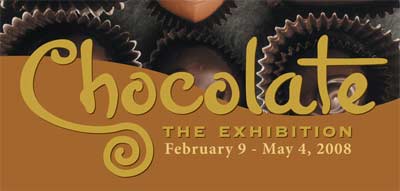
For thousands of years, humans have been fascinated with the sweet snack we call "chocolate." Chocolate: The exhibition is a journey through history that gives the complete story behind the tasty treat that we crave.
You'll explore the plants, the products, the history, and the culture of chocolate through the lenses of botany and ecology, anthropology and economics, conservation and popular culture. You'll begin in the rainforest with the unique cacao tree whose seeds started it all.
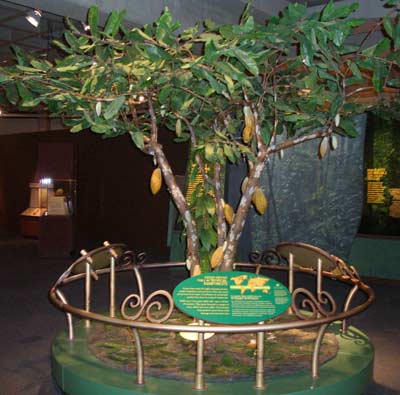
Cacao Tree
Visit the ancient Maya civilization of Central America and discover what chocolate meant nearly 1,500 years ago. Then travel forward in time and northward to the Aztec civilization of 16th-century Mexico, where cacao seeds were so valuable they were used as money. Discover chocolate's introduction into the upper class of European society and how it changed from a luxury to a mass-produced snack food.The ancient Maya of Central America knew it as a frothy, spicy drink, made from the seeds of the cacao tree and used in royal and religious ceremonies. The history of human consumption is not a recorded event, but Jonathan Haas, MacArthur curator of North American anthropology, attributes the first human consumption to the curiosity of the Mayas to try something new and to seek variety. 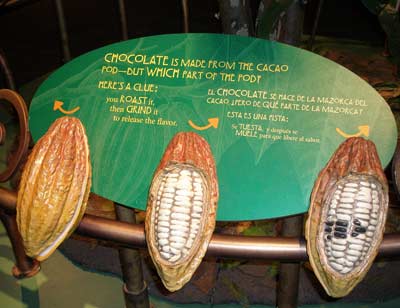
Cacao Pod Exhibit
The Maya let the seeds ferment, dried them in the sun, roasted them, crushed them, added water and spices…and drank! While initially, this chocolate drink was consumed by rich and poor, it soon became a valuable article of trade. The seeds served as a form of money, and the drink became a luxury for the elite, served in lavishly decorated vessels. When the first Europeans reached the Aztec capital, instead of gold they found treasure troves of cacao seeds. 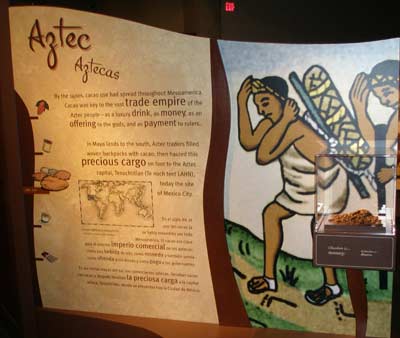
The Aztecs and Chocolate
The exhibition explores the commodification of chocolate by Europeans, and the use of forced labor on colonial plantations to meet the insatiable European demand for chocolate and its new soul-mate, sugar. It parallels the stories of gold, diamonds, and bananas….the use of a rare and valuable product becomes stratified; those who produce it can no longer afford to consume it.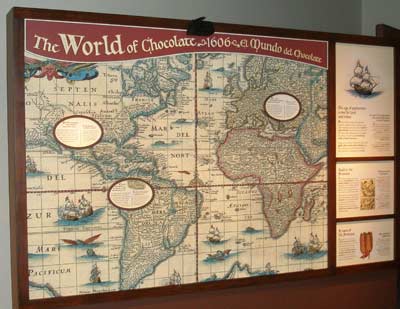
The World of Chocolate Map
Another fascinating part of the exhibition concerns the cacao tree itself (Theobroma cacao), its lowland rainforest ecology, and how it's grown today. A beautiful tree with delicate flowers, cacao grows only within 20° latitude (about 1,380 miles) of the equator. It's relatively small, no more than 30 or 40 feet high, and grows naturally in the rainforest understory, in the shade of larger, canopy trees.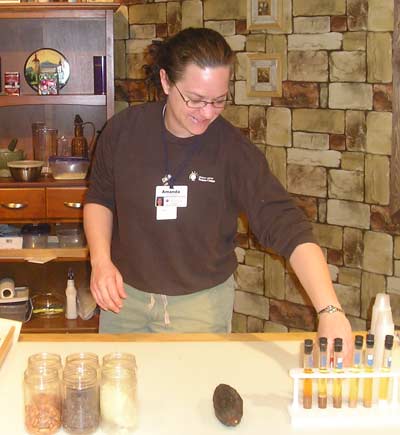
Amanda Whitener of GLSC mixes up some chocolate magic (chocolate lip gloss?) for visitors to sample.
Admission to the exhibition is free to Great Lakes Science Center members. Exhibition entry is $12.50 for adult non-members and $8.50 for children, and includes admission to Great Lakes Science Center signature exhibits. Call (216) 694-2000 for ticket details.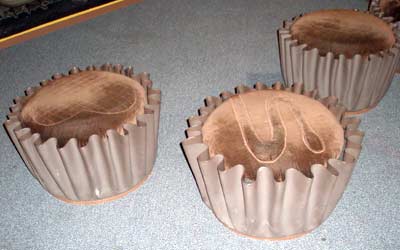
Even the seats at Chocolate: the Exhibition look like chocolate
Special rates are available for tour operators and groups. Call Act 2 Productions at (440) 248-4528.The Great Lakes Science Center is one of the nation's leading science and technology centers, featuring more than 400 signature hands-on exhibits, themed traveling exhibitions, daily demonstrations and the awe-inspiring OMNIMAX® Theater. 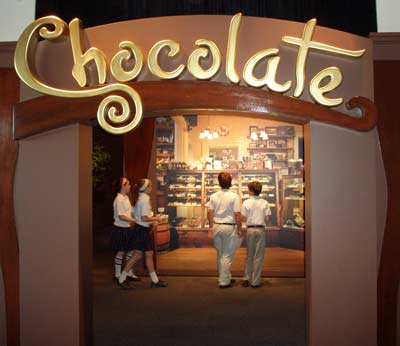
Great Lakes Science Center is open daily 9:30AM to 5:30PM with discounted parking for guests in the attached 500-car garage. For more information, contact the Great Lakes Science Center at 216 694-2000 or visit www.GreatScience.com
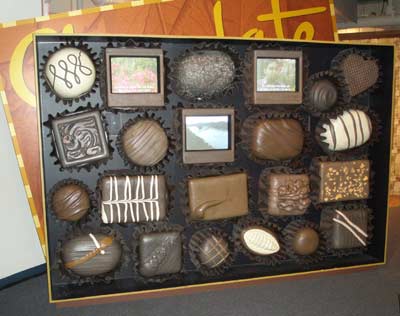
Huge box of chocolates at the Exhibition
Interesting Fun Facts about Chocolate
Quiz - Think you know Chocolate?
Top of Page
Back to Out & About |

